I want to help you build a sustainable, profitable handmade business that makes you consistent income and sales. I only ever teach or recommend marketing, social media, pricing, production and branding tips that I’ve personally used successfully in my own 7-figure handmade businesses.
I'm Mei, from Los Angeles!
Read More
Popular Posts You'll Love
Looking for something?
Categories
starting a business
get more traffic
running a business
make more sales
branding
growing a business
mindset & productivity
podcasts
pricing & money
product photography
reviews
selling on etsy
selling on amazon
social media
selling wholesale
- Facebook0
- Twitter1
- Pinterest3
- 4shares
If you want to sell your handmade products and make as much profit as you can, keep reading because in this post, I’ll be breaking down some cool pricing strategies that can help you sell more of your work online.
The Pricing Formula
The first thing I want to break down is the pricing formula.
This formula is both art and science. You’ll find that there are some strategies for pricing for profit within both parts.
If you’re not familiar with the formula, what I recommend to people is a general formula that works well for handmade products.
There are two steps to the formula.
First, you need to take the cost of goods sold (so that’s all of your materials and your time spent to make that product), then multiply that by 2.
That’s your wholesale price, which is the price you’d sell your products to brick and mortar store owners, for the purpose of reselling your products.
Then the second step is to take your wholesale price and multiply by 2 again. This is your retail price.
To make this process a single step, just take your cost of goods sold, your materials and time spent to make the product, and multiply that by 4 (instead of 2 and then 2 again).

The Science
This is where science comes into the strategy. Your costs is only 25% of your price, which makes the remaining 75% of your price, profit for you.
Here’s an example. Let’s say your costs are $10. Then your retail price is 10 times 4, which makes it $40. That makes $30 of that profit for you!
Where the science part starts to blend into art, is you can change up the multiplier to anything you want. So instead of multiplying by 4, you can multiply by 6. $10 cost to make the product, $60 retail price, which means 60 minus 10, you get $50 of profit.
Generally speaking, I like to recommend that people start with a multiplier of 4. That’s a good benchmark that can apply to most products.
The Art
This starts to become more of an art when you start to consider the perceived value of your product.
For example, jewelry has a high perceived value. There are people who are willing to pay a lot of money for jewelry.
So maybe after doing some competitor research, you find that similar designs as yours can sell for a lot more than what you’re charging if you used the 4 times multiplier.
This is where it’s an art.
There’s no wrong or right way. There’s no one who can give you the answer.
You could multiply by 6. You could multiply by 10.
I recommend you multiply as much as you can so your profits are totally maximized.
Of course, there will be a certain point where you’ve raised your prices so much that people are unwilling to pay those prices.
But that’s a story for another day. A lot of the time, people don’t buy your products not because it’s expensive but because of a lot of other reasons.
Actually, I have another post that talks about the reasons why people aren’t buying from you, so make sure to check that out, after you read this one.
On the flip side, of course, you can use a lower multiplier.
Maybe your products don’t have a high perceived value and people in your market are used to paying a lot lower price point for your type of product.
Let’s talk about stationery. How much are people really willing to shell out for a pack of stickers?
There’s really not much room to go beyond a 4 times multiplier.
You might even find that multiplying by 4 is impossible. There are definitely situations where using a lower multiplier is okay to do.
I personally wouldn’t go any lower than a 2 times multiplier. That means you’re technically selling your products to your online customers, at your wholesale price.
Which then also means, you’re probably not going to sell to wholesale customers, because they’re expecting that 4 times multiplier.
So play around with these price points and different multipliers. Test different prices and see what works for you.
Psychological Mindset
This is a good time to talk about the psychological mindset that people have when it comes to different price points.
For example, someone who is willing to pay $7 for something is very likely to also be totally okay with buying that same product for $9.
If you can sell your products for $9 instead of $7, you’ve just made an extra $2 of profit per product.
Another price range that’s like that, is kind of between that $20 to $40 price point. If you’re selling something for $21, you might as well sell it for $25.
$50 is kind of that point where people start to feel like they’re entering a new pricing territory.
If you’re charging $50, you might as well charge $75, and you might be surprised to see that people won’t feel any different and it won’t affect your conversion rates.
Price Anchoring Strategy
Next, I want to talk about the price anchoring strategy.
This is where you offer 3 different product collections in your shop. Each collection is appealing to a different customer and at a different price range, all while making your customers appreciate your products more.
What it Looks Like
Here’s what I mean.
I sell polymer clay food jewelry, right? I did a craft show once where I tested this strategy and it was very interesting to see how people reacted.
I had 3 different categories of products at 3 different price points: low, medium, and high.
For my low price point, I sold charms that were less than perfect. Basically, these were charms that had some minor defects to them. I didn’t want to sell them for full price.
I offered 3 charms, no necklace chains or findings, for $10. There was no gift box, nothing special about it.
Then at my middle price point, I had my regular necklaces that range between $23 to $28 dollars each.
Finally, at my high price point, I had earrings at $45 all the way up to bracelets with multiple charms on them for over $100.
The interesting thing that happens, is the higher price points, show people the maximum potential value of your products.
A $100 bracelet makes people feel like, “Wow, this is expensive stuff, it’s good work, it’s good quality. But I can’t justify spending $100 on this.”
So when they see the $28 necklace, by comparison, that’s really affordable.
All Price Points Have Their Place
The higher-priced products will make your customers appreciate your medium-priced products a lot more.
What that does, is drive more sales to those medium-priced products, which is the goal. My bread and butter products that sell ninety-five percent of the time are those $23 to $28 necklaces.
People usually buy 2 of those because they feel like it’s affordable, so why not?
Then I have those less than perfect charms: 3 for $10.
Those types of customers who look at my $20 necklaces and still think they can’t afford it. They now have $10 choices to choose from.
The special thing about the lower pricing is it attracts a totally different customer, so you don’t have to worry about cannibalizing your own sales.
Don’t be afraid that no one will pay $28 just because you have a buy that’s 3 for $10.
Lower-priced products sell at greater quantities, so you can move a lot more product that way.
With that being said, don’t be surprised if, at the end of the day, you’ve made just as many sales selling medium-priced products as you did selling lower-priced products.
So really think about how you can introduce new product collections in your shop, to help anchor the price in the mind of your customer.
Sometimes the higher-priced products are something you might never intend to sell. It’s totally okay if its entire existence is just to push sales for the medium-priced products. Businesses do this all the time.
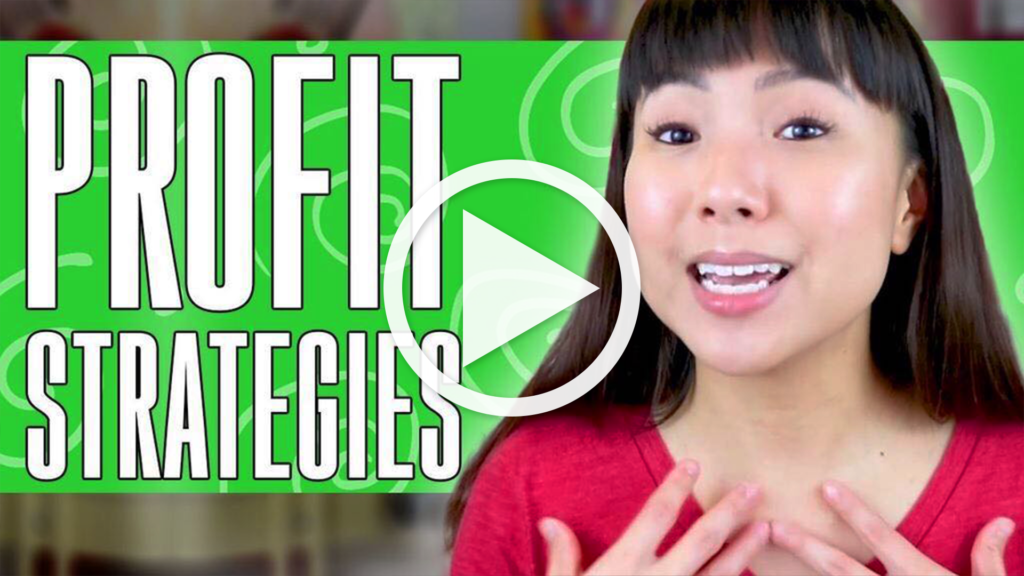 To Watch the Video, Click Here!
To Watch the Video, Click Here!
Other Strategies
Those are some of the bigger strategies. Now I want to share with you some other strategies you can take.
You can get a lot more customers but at a lower price, or the opposite of that which is fewer customers but at a higher price.
Lower Price Point
A few ways you can do lower price but more customers, is with a subscription product.
Subscriptions
I sell one at Tiny Hands: The Necklace of the Month Club. When you join the subscription, you get one mystery necklace every month. Those necklaces are at my medium price points of between $23 to $28 each. But through the subscription, you get it for only $19.99 plus shipping.
It’s a lower price point but I get a lot of customers this way.
I have about 350 to 400 people subscribed to this, so if you do the math, my necklace of the month club is a large percentage of my monthly revenue.
Wholesale
You can also get into doing more wholesale where you’re selling your products at half your retail prices so that stores can resell them to their own customers.
With wholesale orders, there is usually a requirement that store buyers have to buy in bulk from you, so that usually results in a really large order, but at lower prices for each product individually.
Sales
Another strategy is with doing sales every now and then.
On Black Friday, I do my biggest sale of the year. In fact, usually the rest of the year I never offer discounts as I do on Black Friday.
On just one day, I can make $10,000 in sales, which is a lot of money even for someone who’s been doing this a long time.
With these strategies, your overall profit margin will of course be lower, and that’s not necessarily a bad thing, because you also sold a lot more product.

Higher Price Point
Now on the flip side, there are also strategies for selling higher-priced products but having fewer customers. Of course, your profit margins are generally a lot higher for this.
Personalized Products
One, you can sell personalized products. Personalized products are things that you sell with a personalization element.
For example, you sell leather wallets, and you personalize them with stamping the person’s name on the wallet.
It’s not a truly custom made product made entirely from scratch for that customer since you’re starting with a blank leather wallet and then adding on the personalization later.
For something like that, you can probably charge $20 more or so, in addition to the price of the wallet alone.
Custom Products
Custom products are slightly different than personalized products.
This would be something like making a custom wedding dress for a bride.
As you can imagine, something like that would be priced in the thousands of dollars and would require a lot more service from you as the designer.
And finally if you’re an artist, you could sell your original art and even do custom framing.
Diversity is Key
My recommendation for you is to diversify your shop by using as many of these different pricing strategies as possible.
There’s no wrong or right way, but that really helps you mitigate risk and makes you a much more consistent income.
If sales are slow, maybe your subscription product is growing and you’re making sales despite it being a slow season.

One More Tip for the Road!
If you want to make more profits from the same number of customers you’re already getting, consider selling add-ons, up-sells, or cross-sells.
If someone already has the intention to buy something, they’re much more likely to want to buy a second thing.
For example, selling personalized engraving on jewelry for an additional fee. Or cross-selling a different product on sale at the cart page after someone has added one thing to their cart. You can even sell an add-on for faster turnaround time.
My shop has a two week turnaround time policy, but people are always needing faster service because of upcoming birthdays or gifts they need to give to people. They can pay a little extra for rush service and we jump them to the front of the line.
You can even sell gift wrap as an add on.
So, those are all of my tips that I wanted to share with you today on how to make more profits and how to sell your products more.
If you enjoyed watching this, read the next post on here for more ways to grow your business and make sales.
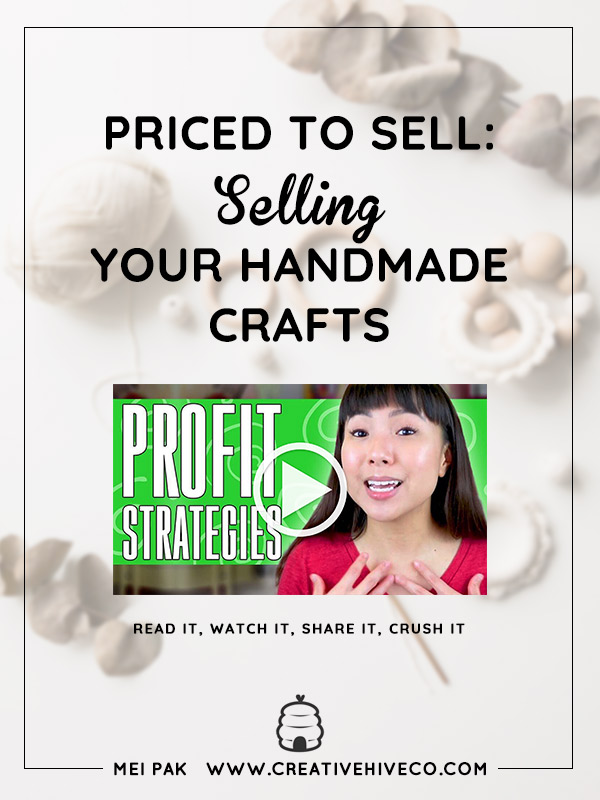
Leave a Comment
Liked this article? Share it!
Unlock a Profitable Handmade Business
in Just 12 Weeks Without Using Etsy
or Social Media
FREE WORKSHOP
This workshop is for anyone who makes and sells a handmade or physical product, including jewelry designers, artists, paper designers, bath & body product makers and more!
What You'll Discover
The #1 mistake people make with Etsy & social media that causes shops to FLOP
The secret to making it with your handmade shop so it's no longer just a hobby
How to make sales in your handmade shop with ease so you can finally get to 6-figures
TAKE ME THERE
Leave a Reply Cancel reply
About
Blog
A Sale A Day
Student Login
Free Class
Contact
Terms
Become A Student
Watch On YouTube
Student Reviews
See My Handmade Shop!
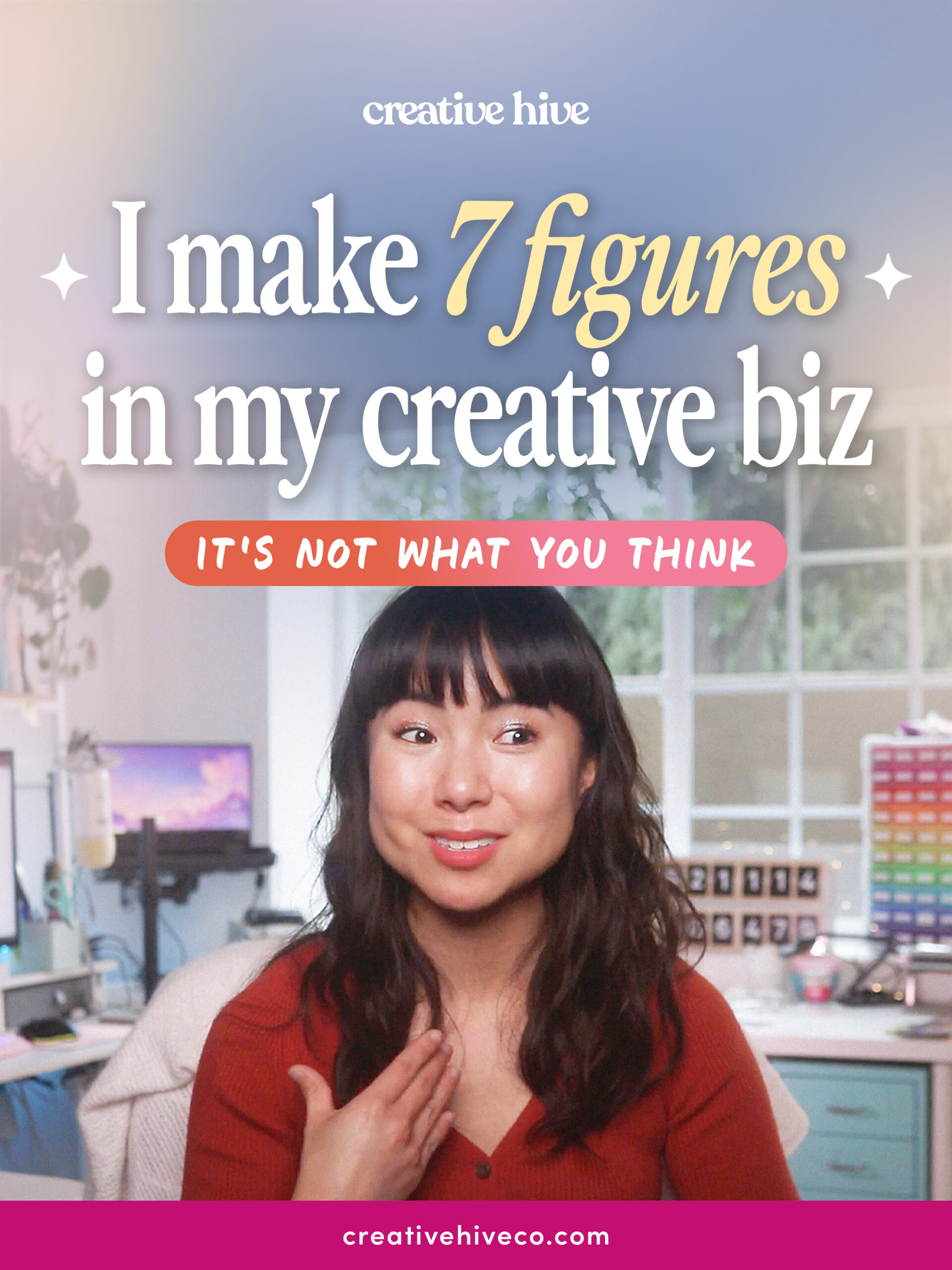
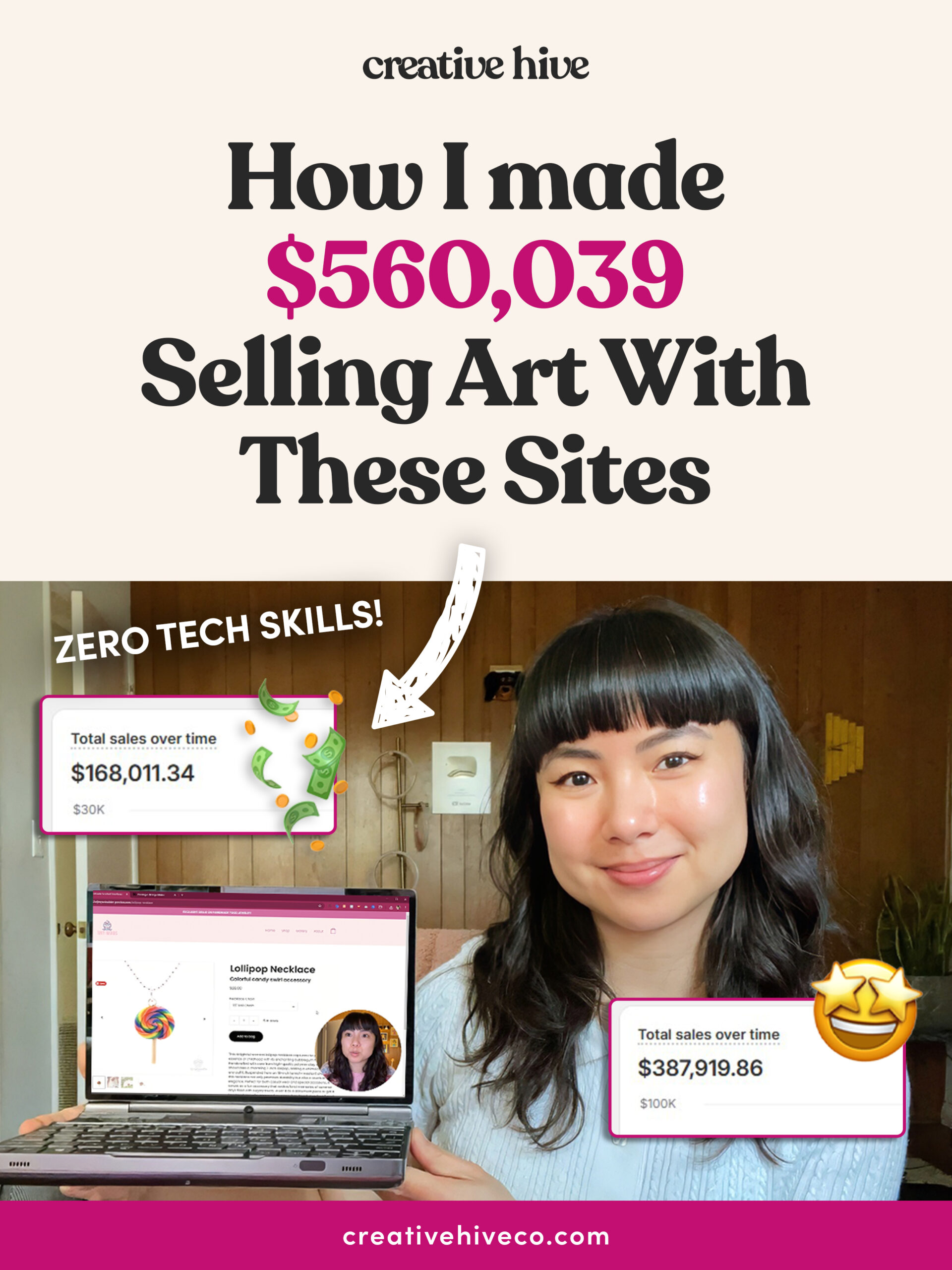
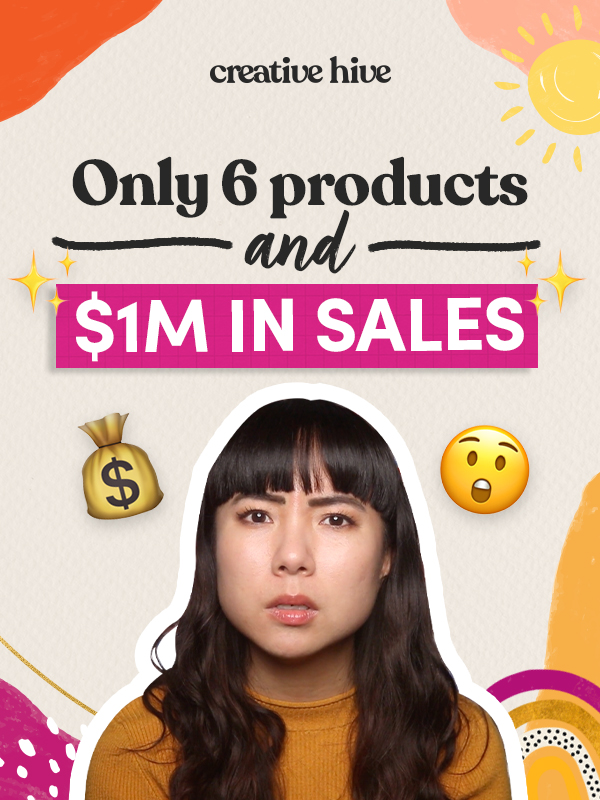
Your email address will not be published. Required fields are marked *